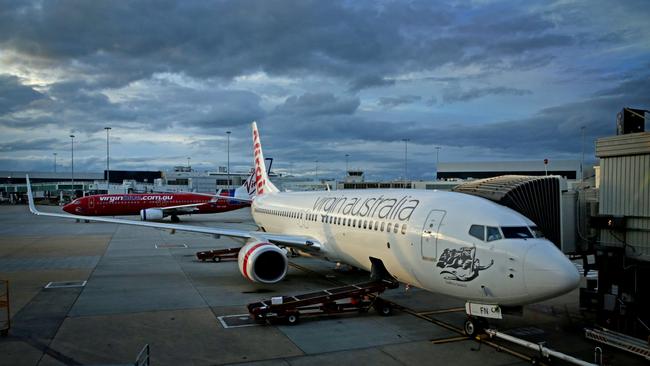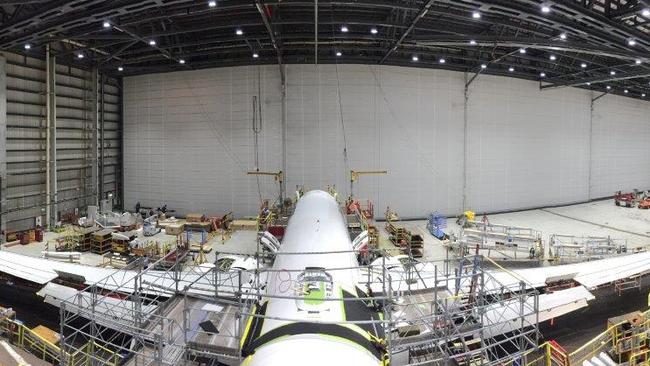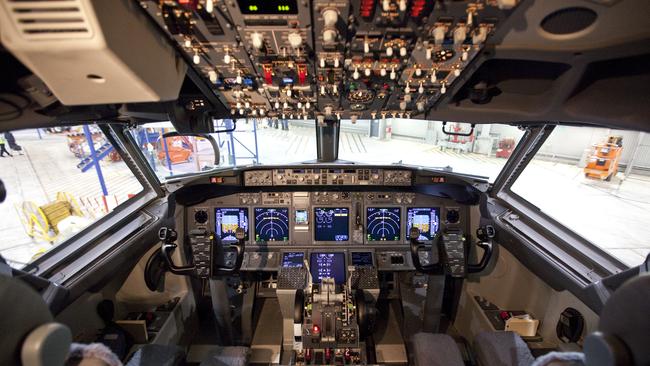Qantas, Virgin race to check Boeing 737 ‘pickle fork’ crack
After warnings from US authorities, Qantas and Virgin have checked 52 Boeing 737s since Wednesday. Here’s what they’ve found.
Boeing 737-800s are the workhorse of many airlines’ fleets, carrying more than 60,000 passengers a day across the country on Qantas alone.
So it stands to reason that any safety issue with the aircraft was always going to be received with a high degree of concern.
The discovery of a hairline crack in the “pickle fork” – the common name for a component that secures the wings to the fuselage, was about as bad as it could get.

As a result, Qantas reacted quickly, ordering inspections on all aircraft that had clocked up more than 22,600 flights in line with advice from the US Federal Aviation Administration.
When one Qantas aircraft with just under 27,000 flights was found to have a hairline crack, the inspection time frame was further condensed.
Late on Wednesday Qantas promised all 33 aircraft in that category would be checked by Friday, and they were, with another two aircraft found to also have pickle fork cracks centred on one bolt out of eight. All three aircraft, registered VXA, VXF and VXM, were immediately taken out of service until repairs could be made – not such an easy process.
A Virgin Australia spokeswoman said 19 of its 737-800s had been inspected in line with the FAA’s directive, and no cracks had been detected. The airline has 73 of that aircraft in its fleet, with an average age of 8.9 years. Qantas’s 737-800 fleet, has an average age of 11.6 years. Each of those aircraft undertakes an average 1800 flights a year.
READ MORE: Calls for Qantas to ground Boeing 737 fleet after cracks found | Commentary – Batteries in phones, laptops threaten safety
No spares
Qantas head of engineering Christopher Snook said essentially the pickle forks would be replaced but as the components were considered a “lifetime design”, Boeing did not have any spares.
“Boeing is developing a kit for it,” Mr Snook said, adding that it was expected the whole process to take about a month. Qantas intended to get the planes back in service by Christmas.
Qantas Domestic CEO Andrew David rejected the suggestion all 75 of the airline’s 737 fleet should be checked to reassure passengers of their safety.
He said 42 of the aircraft were not even close to the 22,600 flight threshold dictated by the FAA, and to carry out inspections would be out of step with global safety management systems.

“What happens is, we can all fly safely around the world because there is a system that works, where these airworthiness directives are issued and all airlines comply to those,” Mr David said.
“We work within that system, and if the regulators now review this and say we need to change that inspection regime then we will do that, and we will do it at the pace that we need to do so.”
Pilots satisfied
Pilots said they were satisfied with how management was responding.
“Qantas is taking it very seriously and that’s all we should expect any airline to do,” said Australian and International Pilots Association safety and technical director Captain Shane Loney. “I think it’s way too early for people to be getting concerned.”
B737 pilot and AIPA president Mark Sedgwick agreed.
“Based on the information we have to date, AIPA is satisfied that Qantas has moved to comply with checks required on the 737-800 aircraft,” he said.
“We note they have done so well within the regulator’s and the manufacturer’s required timelines.”

Mr David said some minor scheduling changes may be needed as a result of the three aircraft being out of action but any customer impact would be minimised.
“Our entire reputation and brand is built on our safety record, and because of that, Qantas will never fly a plane if we do not believe it is safe to do so,” he said.




To join the conversation, please log in. Don't have an account? Register
Join the conversation, you are commenting as Logout